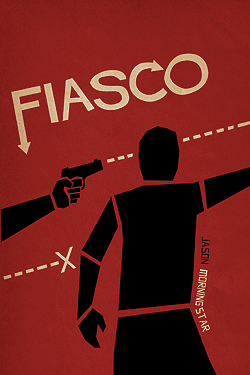
More than a few video games that provide a multiplayer experience also have single player campaigns. In fighting games and others, this is referred to as ‘story mode’. The quality of these stories can vary wildly, but the pitfalls and perils of storytelling in video games is much better covered by other sources, and it’s not why I’m writing this. I’m writing this because relegating “story mode” to single player play feels like a misnomer, even in something as simple as a fighting game or a first-person shooter. Whenever more than one person is involved in play, I feel there’s massive potential for storytelling.
Some systems better facilitate this than others, of course. Eventually, in a fighting game, you’ll stop contriving reasons your character gets up after having his or her spine ripped out or all of his or her ribs broken. Games set up for multiple players that lean towards story construction, from MMOs to your typical Dungeons & Dragons campaign, have plenty of tools to keep things moving. But those games tend to come with a lot of systems and rules that can interrupt the flow of the story. I enjoy them thoroughly, don’t get me wrong, but some games have a fantastic way of keeping the game aspects simple and letting the story aspects shine.
Consider Fiasco, by Jason Morningstar. Much like a role-playing game with the tables and systems stripped down to the bare minimum, Fiasco is “a game of high ambition and low impulse control.” Inspired by caper films like Burn After Reading, Snatch, Fargo, and A Simple Plan, the game puts players in relationships with one another and gives them each goals to try and achieve. The systems are there simply to set up the tapestry of the situation, from who knows whom to what’s desired and why, and to let you know when things are about to go horribly, horribly wrong. In the end, the dice are an impetus for the tension, drama, fun, and laughs, rather than encapsulating those things themselves. It’s a brilliant game and a great way to tell stories with friends, especially if one hews to Rogers’ Rules:
1. Who Wants What?
2. Why Can’t They Have It?
3. Why Should I Give A Shit?
Shock: is a similar game by Joshua A.C. Newman, where players work together to create a sci-fi world in the vein of Ursula K. LeGuin or Philip K. Dick, populate that world with their ideas and characters, and go nuts from there. Everybody around the table contributes to the aspects of the universe created, from the nature of the planets to the motivations of both protagonists and antagonists, and the ruleset, like Fiasco‘s, keeps the story central while offering support to keep things moving and keep players interested. It’s a fascinating approach to both gaming and storytelling.
As impressive and fun it can be to see what enjoyment can be wrought from a big box full of wooden components, cards, boards, and tokens, there’s something to be said for the sheer power of a story well-told with friends. Collaboration gives rise to ideas that could never have taken flight on their own, and when everybody’s helping tell the story, everybody has a stake in seeing it through to the end. That’s what makes games like Fiasco and Shock: so brilliant. It’s not about the components or the systems or anything the game actually provides; it’s all about the people around the table.



September 6, 2013 at 9:09 am
Yeah, I am really curious to try Fiasco. I think it would be a blast with my main gaming group.